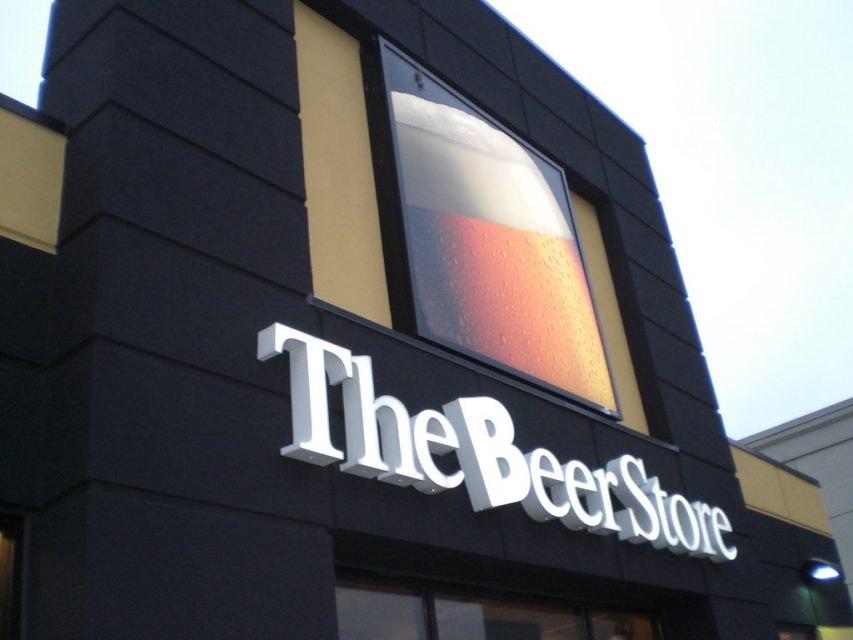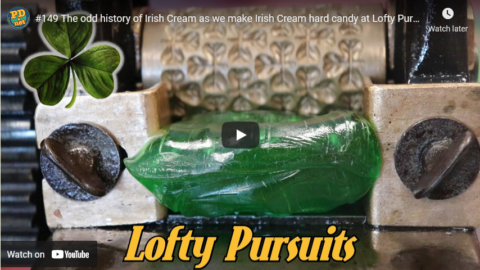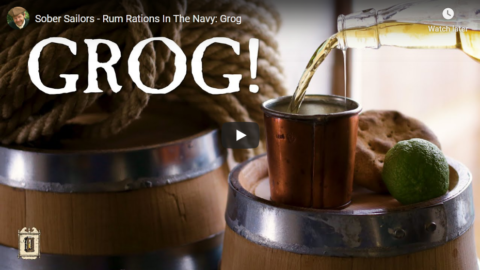I’m from Kentucky, and people tell me I should be loyal to Bourbon, but I see the whiskey hierarchy sort of like this:
- Scotch. Nectar of the Gods. Complex, smooth, and just the right thing to fill yourself up on before painting yourself blue and riding off to kick the crap out of a bunch of English gits. Lagavulin and Macallan (16 years) are the reason people have been able to tolerate life in the scrubby, bleak landscape of northern Great Britain. Or whatever the island that contains Scotland is called. For all I know, “Great Britain” includes the Falklands.
- Bourbon and sour mash. Only good for mixing, unless you spend at least forty dollars, because Bourbon is usually harsh. And that includes Wild Turkey. But the better ones are smooth and full-flavored, albeit about as complex as a Kool Pop. I like Blanton’s. Maker’s Mark gold is okay, but only if your friends are serving it free of charge. People holler about Knob Creek all the time. I’m suspicious of old-timey-looking products that didn’t seem to exist until 1985. I suspect that it’s a gimmick aimed at yuppie suckers, but I have not actually tried it.
- Irish whiskey. Wonderfully smooth; especially Black Bush, which is my favorite. Great subtle flavor. Even the cheaper brands are pretty good. But zero complexity.
- Canadian. This makes a good substitute for windshield-washer fluid. Absolutely the most boring whisky (with no “E”) in the universe. Tastes like brown water. Alcoholics love Canadian whisky, because there’s not much to it, and you can drink it day after day without much effort. I can’t believe Canadians waste their time driving to the distillery to make this garbage. Laughable.
I guess now I’ll get flames from the unfortunate people who enjoy Jack Daniel’s, and from pedantic losers who drink obscure distilled beverages made in Wales.
Canadian Club and Crown Royal drinkers won’t flame me until at least noon, because they are all alcoholics and won’t be done with their morning retching until then.
I still need to find some really bad Scotch on a par with Jack Daniel’s. Something packed in plastic bottles or even cans. You need a good cheap harsh whisky to marinate BBQ. The good stuff, I reserve for marinating myself.
Steve H., “Booze and Birds: My Stressful Life”, Hog On Ice, 2005-03-20
August 13, 2021
QotD: Whisky, whiskey, and Canadian whiskey
August 6, 2021
QotD: The development of Madeira wine
The island of Madeira was often a last port of call from the 15th Century for sailing ships heading to the New World or the East Indies. The local wine loaded on to the ships would quite often spoil because of the heat and motion of the voyage. To prevent this from happening, a small amount of alcohol distilled from cane sugar was added to bring up the strength and kill unwanted bacteria.
The heat of the voyage, especially in the confined holds of the ships, plus the motion of the ship, transformed the wine, giving it the familiar tart edge that distinguishes it from port. One shipment was returned after the long round trip, and was found to be popular with customers, who preferred the new taste, so producers began sending the wine on the round trip to age it. It was known as vinho da roda, wine of the round trip, and initially could not be produced any other way. Thomas Jefferson was an early fan, and the Founding Fathers toasted the signing of the Declaration of Independence with it.
The long sea voyage was expensive, so the producers experimented with ways to reproduce the conditions of the voyage. At first they stored it in rooms exposed to the heat of the sun, then developed the modern method of heating the wine in steel vats heated by running hot water. This, they found, replicated the conditions of a tropical voyage and produced the widely admired wine we know as Madeira.
Dr. Madsen Pirie, “Some discoveries, like Madeira, are accidental”, Continental Telegraph, 2018-11-27.
July 22, 2021
Bourbon, almost an accidental hit
At TownHall, Salena Zito discusses the way Bourbon became a popular modern beverage from a none-too-promising eighteenth century beginning:

“Bourbon Bottles” by larryjh1234 is licensed under CC BY 2.0
About 250 years ago, farmers looking for a way to make their surplus corn crop profitable decided to distill it. Today, that leftover grain has become a billion-dollar industry and a symbol of the Bluegrass State’s identity, economy and culture.
“How bourbon came about is (what) … the American spirit looks like: business, independence, freedom, a little bit of luck and a lot of perseverance,” said Justin Thompson.
Thompson and his colleague Justin Sloan are the proprietors of The House of Bourbon, the world’s largest bourbon store, located on West Main Street in Lexington right across from Mary Todd Lincoln’s childhood home.
And right now, business is booming.
Thompson and Sloan started collecting rare and vintage bottles of bourbon 20 years ago, when the drink was out of favor. Then, four years ago, the state passed a law allowing the resale of distilled spirits and the duo opened their store, selling not just their stockpile but the history of the drink itself.
Bourbon is concocted from a strict formula. “By law it has to be made with a minimum of 51% corn, aged in charred new oak barrels and stored at no more than 125 proof and bottled at no less than 80 proof,” Thompson said.
But its sweet, rich flavor was actually born out of happenstance. In the early days, the best market for bourbon was on the East Coast, so farmers had to ship their barrels down the Mississippi to Louisiana then around Florida and up the coast. The trip took months but also allowed the whiskey to age beautifully.
“When merchants along the East Coast started marveling about this red whiskey with its unique flavor, that marked the beginning of the bourbon industry,” said Thompson.
In 1964, Congress deemed bourbon the nation’s native spirit, and there’s nothing more American than enjoying a sip of the brown stuff in a classic cocktail like a mint julep or an Old-Fashioned on the Fourth of July weekend.
June 10, 2021
The odd history of Irish Cream as we make Irish Cream hard candy at Lofty Pursuits
Lofty Pursuits
Published 25 Feb 2021Jake makes Irish Cream green shamrock hard candy for St. Patrick’s day. We discuss the history of the weird flavor and how it has become a tradition even though it was invented in the 1970’s
A great article about the history of Irish Cream
https://www.irishtimes.com/culture/bo…Buy our candy: http://www.pd.net
Listen to our podcast: http://loftypursuits.libsyn.com/website
Join our Patreon at https://www.patreon.com/LoftyPursuits
March 27, 2021
QotD: The best bar in the world
An Irishman, an Italian, and an Iowan are arguing about which bar is the world’s best. “The best bar in the world is Paddy’s Pub in County Cork,” says the Irishman. “After you’ve bought two drinks at Paddy’s, the house stands you to a third.” “That’s a good bar,” says the Italian, “but not as good as Antonio’s in Old Napoli. At Antonio’s, for every drink you buy the bartender buys you another.” “Now, those sound like mighty fine bars,” says the Iowan, “but the best bar in the world is Bob’s Bar and Grill in Des Moines. When you go into Bob’s you get three free drinks and then you get to go in the back room and get laid.” The Irishman and the Italian are astonished to hear this, but they are forced to admit that Bob’s Bar and Grill must indeed be the best bar in the world. Suddenly, however, the Italian gets suspicious. “Wait a minute,” he says to the Iowan. “Did that actually happen to you personally?” “Well, no, not to me personally,” admits the Iowan. “But it actually happened to my sister.”
Steve Stewart-Williams, “Keeping It Casual”, Quillette, 2018-10-14.
March 22, 2021
Apocrypha: Tour of the Kyrö Distillery
Forgotten Weapons
Published 21 Mar 2021While I was in Finland for Finnish Brutality 2021, I took a day to hitch a train ride up to Isokyrö, about 400km northwest of Helsinki. The Kyrö distillery was founded there in 2012, making single malt Finnish rye whiskey and several varieties of gin.
Their own video does a fine job describing the origins of the distillery:
But I wanted to get a look at the production process — and it’s impressively well set up! The rye is made in a pair of imported Scottish pot stills, and the gin uses a combination of pot and column distillation. They were kind enough to give me a tour of the whole place, so let’s have a look around!
They are distributed throughout the EU, and to a limited extent in the US.
(Apocrypha is a behind-the-scenes periodic series normally only available to Patreon supporters of Forgotten Weapons. Want to see more? Sign up to help support me directly at http://www.patreon.com/forgottenweapons)
September 21, 2020
QotD: Prohibition and the Temperance movement
Prohibition was the culmination of nearly a century’s worth of propaganda, and repeated failed attempts to get such laws to work at the local and state level. Read J.C. Furnas’ The Life and Times of the Late Demon Rum for an overview of the pre-1919 Temperance/Prohibition movement.
… [T]he original Temperance movement started out with the very best of intentions, and was trying to deal with a real problem. In colonial and early-19th-century America, people (men, women and OH HORRORS even children!) drank enough that by modern standards we’d call them alcoholics. Modern Russians drink more, but if they were transported back to that time and place, they’d fit right on in. Part of it was because water was often not safe to drink (tea and coffee were often expensive and hard to get, while beer and other alcoholic drinks were made just about everywhere), part of it was snobbery (only really poor people drank water!) and part of it was because people back then believed that alcohol strengthened and warmed the body.
Two of the good side effects of the Temperance/Prohibition movement were the provision of safe, clean drinking water in American cities and towns, and the modern fruit-juice industry (as a lot of churches went hot-Prohibition, they got uneasy about serving wine at Communion, so they went to work and came up with non-alcoholic substitutes.) Welch’s Grape Juice was started by a pastor who wanted non-alcoholic “wine” for Communion, and caught on, real big.
Eric Oppen, posting to the Lois McMaster Bujold mailing list, 2020-06-18.
September 2, 2020
QotD: Prohibition
Prohibition only makes things worse, like when alcohol Prohibition turned us from a peaceful nation of wine and beer drinkers into a crazed culture going blind on bathtub gin while the distributors shot each other down with Tommy-guns in the streets.
Vin Suprynowicz, “On Reporters Who Ask No (Unapproved) Questions”, Libertarian Enterprise, 2018-06-03.
August 6, 2020
QotD: Selling booze to the immature
I’m getting really sick of manufacturers trying to extend their user base by appealing to younger people, playing on their unsophisticated and undeveloped taste buds by adding Kool-Aid flavors to grownup drinks. (Chocolate vodka? are you fucking kidding me?) This is akin to trying to get more women to shoot guns by making gunpowder smell like lilacs.
I am, by the way, fully aware of how innovation works — that most of civilization has occurred because someone, somewhere said: “Y’know, I bet if we just changed …” — but that’s confusing improvement with extension. Tinned fruity-flavored gin is not an improvement.
I know that raspberry-flavored beer may have caused more people to take to beer drinking, but that’s changed things, and not for the better. Go into any bar and look at what beers are on tap these days. Barely a drinkable one available, and worse, they’ve pushed all the decent beers into bottles (or out of stock) while hipsters and chickies are catered to with the latest fad, Strawberry IPA [pause to be sick].
Basically, booze manufacturers are changing their products to appeal to people who don’t like booze. In the old days of marketing, we used to call that pointless endeavor “catching eels” (try catching an eel in mid-air when someone tosses it in your direction and you’ll see what I’m talking about). Not only is it pointless, it’s mercurial because what’s popular today won’t be popular tomorrow as your fickle new customers chase after the next “Flavor Of The Month”, and you’ll have gone from catching one eel to catching multiple eels. That’s something they don’t teach in the Marketing section of the typical MBA course because MBAs are all about theory (“line extension”, “product enhancement”, etc.). And don’t tell me I’m talking nonsense because I’ve seen the curricula.
Kim du Toit, “Gilding the Lily #268”, Splendid Isolation, 2018-05-24.
July 29, 2020
QotD: Grog in the Royal Navy
More generally, though, do we have any historical evidence of groups whose alcohol consumption was documented with any confidence, to see how they fared?
Actually, we do, at least as a floor: we know the quantity of the Royal Navy’s spirit ration, which until 1823 was based on half a pint of rum (284 millilitres in foreign) per man per day. We also know its minimum strength, since it was tested by trying to ignite gunpowder soaked in it: it had to be over 57% alcohol by volume (“proof strength”) to pass. That’s sixteen units of alcohol – not per week, but per day – or north of a hundred units a week, just for the issued ration before sailors bought any extra from the purser. (No wonder Jack Tar was jolly back in those days!)
But clearly, we would expect a body of men consuming such suicidally destructive quantities of booze to be physical wrecks, raddled by cirrhosis and disease? As Dr James Lind (he of the discovery that citrus fruits were a sovereign remedy for scurvy) put it,
It is an observation, I think, worthy of record that fourteen thousand persons, pent up in ships, should continue, for six or seven months, to enjoy a better state of health upon the watery element, than it can well be imagined so great a number of people would enjoy, on the most healthful spot of ground in the world.
(For context, around this point the Navy won the battle of Quiberon Bay, with twenty ships – who had less than one man sick per ship).
The ration was halved in 1823, and again in 1850, but for a hundred and twenty years until Black Tot Day in 1970, the Navy still issued nearly thirty units of alcohol a week to everyone on the lower deck (junior rates got theirs diluted, seniors got neat rum). Either folk were hardier back then, or Britannia managed to rule the waves and keep her sailors reasonably healthy despite being a pack of hopelessly addicted alcoholics.
Jason Lynch, “How Much Is ‘Too Much’?”, Continental Telegraph, 2018-05-08.
July 6, 2020
Sober Sailors – Rum Rations In The Navy: Grog
Townsends
Published 24 Feb 2020Visit Our Website! ➧ http://www.townsends.us/ ➧➧
Help support the channel with Patreon ➧ https://www.patreon.com/townsend ➧➧
Instagram ➧ townsends_official
April 15, 2020
“Experts” and their “models”
In the latest Libertarian Enterprise, after offering us his current favourite mixed drink recipe, L. Neil Smith gets around to discussing our modern dependence on “experts” wielding their intricate and convoluted computer models to guide our lives:
Start with a tall glass of Mott’s Clamato over ice. Many people can’t stand the idea of tomato juice enhanced with sweet clam juice (and some spices), and I won’t try to sell you on it, here. But if you relish it the way I do (I used to buy it by the gallon), then bon appetit! Throw in a healthy shot of tequila — mine is Cuervo Gold, but your mileage may vary. Add a fat slice of lime on the edge of the glass, a slice of lemon, and a slice of orange. The citrus really dresses it up. These are all ingredients I like very much, and together, they take the edge off a day I spent writing 1000 or 2000 words (my record so far is 3200) and let me relax.
At the end of that day, when my lovely and talented wife quits work and comes home — from the dining room, these days — we have a nice, comfortable cocktail hour (she drinks Cuba Libras) and watch Tucker Carlson. Ordinarily, three giant cans of the Budweiser concoction (which is also made with Clamato) will make me the tiniest bit silly. This drink, the Bloody Mermaid (ick) is surprisingly gentle and I have had two and a half so far without embarrassing myself. I love the taste of tequila neat (many don’t), and I would still be doing shooters, except that my loving bride of 36 years won’t let me eat that much salt.
Please enjoy this silly little drink if you can until we’re all free again.
Oh yeah — I couldn’t resist after all. There’s something I need to get off my chest. I’m sure you remember the way “experts” with computer models warned us all about Y2K, and the way it meant the end of Civilization-As-We-Knew-It. Then there was Global Warming — more experts, more computer models — there are still gullible morons out there who believe it’s not an obvious hoax. Now experts and their — increasingly failing — computer models are all telling us we are in the middle of the worst health crisis since the Black Death.
I happen to be, as you know, a lifelong libertarian and the most fervid advocate of the First Amendment that you will ever read. Therefore, I cannot endorse the suggestion I’ve heard that whenever an “expert” testifies about anything before any legislative body anywhere, and the words “computer model” come out of his mouth, the Sergeant-at-Arms should smash his face in, drag him out into the street, and shoot him him the back of the head. Perhaps millions of lives could be saved that way, but, as a lifelong libertarian and the most fervid advocate of the First Amendment you will ever read, I cannot endorse that position.
So drink up, my dear friends and readers and have the best time — under house arrest — that you possibly can!
April 12, 2020
Minimum alcohol pricing – a policy so good you have to lie about it
Scotland has had legal minimum prices for alcoholic beverages since mid-2018. If you read a random selection of mainstream media coverage, you’d know that it’s been a huge success, with vastly improved public health results at a price to consumers measured in mere pennies. As with all propaganda efforts, if you tell the lies often enough, people may believe you:
There has been all sorts of rubbish written about minimum pricing since it was introduced in Scotland in May 2018. Nicola Sturgeon has lied about in the Scottish Parliament. The BBC has gone to extraordinary lengths to spin the policy as a success. The public have been told that alcohol-related hospital admissions have gone down when they have gone up. We have seen the media fall for blatant cherry-picking. We have been told that rates of problem drinking have gone down when we don’t have any evidence either way.
One of the few solid facts — that there were more alcohol-related deaths recorded in Scotland in 2018 than in 2017 — has been sidelined. Instead, the media have focused on a disputed, and relatively small, decline in alcohol sales as if that were an end in itself. Any port in a storm (fortified wine sales have definitely benefited from minimum pricing).
Figures from the calendar year of 2018 are of limited use because minimum pricing didn’t begin until May 1st. Today, for the first time, I can reveal the monthly mortality figures for Scotland, England and Wales. They show that there was no difference between the change in annual death rates from alcohol-related causes, regardless of whether the country had minimum pricing in place. Both England/Wales and Scotland saw a decline between May and December of seven per cent (compared to the previous year).
This graph is published in a new briefing paper I have written for the IEA. It summarises all the evidence gathered to date on deaths, hospitalisations and sales, plus exclusive new data.
Importantly, it contains estimates of the costs to consumers. Among the more outlandish claims made by the Sheffield modellers was the idea that moderate and low income consumers would be barely affected by minimum pricing. They predicted that a low income moderate drinker would only pay an extra 4p a year! This was never realistic, not least because it was based on the minimum price being set at 45p and they defined a moderate drinker as someone consuming the equivalent of just two pints of lager a week, but it worked from a PR perspective because it quelled politicians’ fears about the policy being regressive.
March 29, 2020
Can we keep a few of these innovations after the Wuhan Coronavirus outbreak is over?
Chris Selley finds a few of the changes to business practice in Ontario to be definite improvements that we should retain once the panic subsides:

“The Beer Store” by Like_the_Grand_Canyon is licensed under CC BY-NC 2.0
Prepping my urban coronavirus hermitage involved packing my freezer with comforting made-ahead delights: pulled pork, chili, various pasta sauces including a life-altering Bolognese ragout recipe from Marie in Quebec City, who runs foodnouveau.com. Mostly, however, I’ve found myself wanting to eat … a bit more downscale. Supplies of Pogos and Bagel Bites are shamefully depleted, well ahead of schedule. And I do love that chicken from Popeye’s.
My superb local fried chicken joint has come up with a very simple and reassuring way to fill walk-up orders. It’s explained on the locked door: You phone in your order from outside, then retreat eight feet; an employee comes to the door with the credit/debit machine, makes eye contact, demonstratively puts on a fresh pair of gloves, opens the door and places the machine on a stool outside, along with the box of gloves. The customer dons a pair of the gloves, completes the transaction, discards the gloves in the waste basket provided, and retreats eight feet again. The employee, wearing fresh gloves, returns with the order and places it, with a smile, on the stool.
This is neither particularly ingenious nor unique. The food-delivery industry has taken to calling it “contactless delivery,” which is an amusingly jargon-y term for “pay in advance and we’ll leave it wherever you tell us and run.” I found myself weirdly impressed, though. Popeye’s system might not scale to Ronald’s place across the street, and I’m certainly not questioning McDo’s decision to shut down everything in Canada except delivery and drive-through. But especially living in a city where most everyone seems to be treating COVID-19 with suitable respect, it’s nice to appreciate the ingenuity that will keep those of us lucky enough to be sentenced to house arrest as comfortable as possible.
And it has been striking to see governments getting out of the way. Ontario, where change is generally about as welcome as a dry cough and fever, is all of a sudden a jurisdiction where licensed foodservice establishments can sell alcoholic beverages with takeout or delivery meals. It’s a place where supermarkets licensed to sell booze can do so as of 7 a.m. British Columbia made the same call on booze delivery and takeout. Alberta has allowed restaurants to sell their booze, period.
It’s hard not to notice that these loosened restrictions come as government-run bottle shops in Ontario and Quebec shorten hours. In Ontario, the Beer Store, a foreign-owned quasi-monopoly, has reduced hours and refuses to refund empty bottles. (There is no other place to refund empty bottles in Ontario.) They say you find out in a crisis who your friends are.
blogTO shows how some Toronto restaurants are getting creative with wine and food delivery options.
February 6, 2020
QotD: Saint Paul
The anti-booze activists of the church tend to waffle a bit when you bring up the wedding at Cana. It’s a metaphor for something else, they might say, or they come up with biblical quotes to justify their stance, most of which come from that Saint Paul chap, as far as I can figure out. Look, I’m sure Saint Paul was a decent fellow and good to his mother, but he was not a barrel of fun. Old Miseryguts — as I’m sure his former friends called him after his conversion — was against practically everything that makes this vale of tears at all palatable. You will look in vain for a joke of any sort in either of the Epistles to the Corinthians, and the Thessalonians don’t get off much lighter.
Nicholas Pashley, Notes on a Beermat: Drinking and Why It’s Necessary, 2001.








